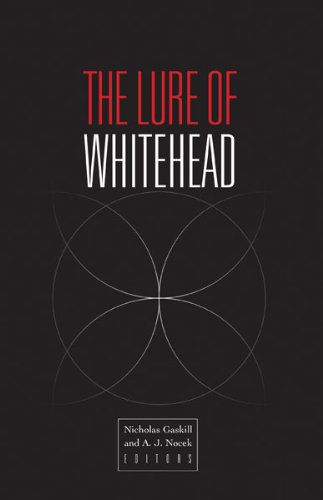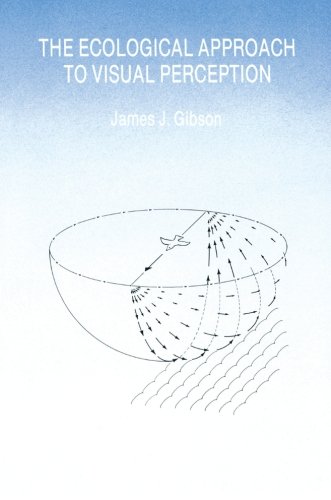Nicholas Gaskill, A. J. Nocek (eds.): The Lure of Whitehead (2014)
Filed under book | Tags: · abstraction, bifurcation, consciousness, constructivism, creativity, difference, ecology, feeling, god, immanence, life, mereotopology, metaphysics, nature, ontology, perception, philosophy, posthuman, science, society, subject, temporality, time, vitalism

“Once largely ignored, the speculative philosophy of Alfred North Whitehead has assumed a new prominence in contemporary theory across the humanities and social sciences. Philosophers and artists, literary critics and social theorists, anthropologists and computer scientists have embraced Whitehead’s thought, extending it through inquiries into the nature of life, the problem of consciousness, and the ontology of objects, as well as into experiments in education and digital media.
The Lure of Whitehead offers readers not only a comprehensive introduction to Whitehead’s philosophy but also a demonstration of how his work advances our emerging understanding of life in the posthuman epoch.”
Contributors: Jeffrey A. Bell, Nathan Brown, Peter Canning, Didier Debaise, Roland Faber, Michael Halewood, Graham Harman, Bruno Latour, Erin Manning, Steven Meyer, Luciana Parisi, Keith Robinson, Isabelle Stengers, James Williams.
Publisher University of Minnesota Press, 2014
ISBN 9780816679959
ix+427 pages
Review: Ronny Desmet (Constructivist Foundations, 2015).
PDF (updated on 2021-3-9)
Comment (0)James J. Gibson: The Ecological Approach to Visual Perception (1979–) [EN, RU]
Filed under book | Tags: · ambience, ecology, environment, image, information, light, media, movement, object, perception, perspective, psychology, surface, vision

“James J. Gibson (1904–1979) is one of the most important psychologists of the 20th century, best known for his work on visual perception. He received his Ph.D. from Princeton University and his first major work was The Perception of the Visual World (1950) in which he rejected behaviorism for a view based on his own experimental work. In his later works, including The Ecological Approach to Visual Perception (1979), Gibson became more philosophical and criticized cognitivism in the same way he had attacked behaviorism before, arguing strongly in favor of direct perception and direct realism, as opposed to cognitivist indirect realism. He termed his new approach ‘ecological psychology’.”
“He moved from thinking about what patterns could act as stimuli to rethinking the concept of the stimulus itself, ultimately rejecting “stimulus” in favor of his version of “information.” In a 1960 paper that is a classic in its own right, Gibson carefully surveyed the patch work of meanings of the term “stimulus” that could be found in the literature. He concluded that the optical (or acoustic, or haptic etc.) patterning that would best correspond to actual perceiving in the world no longer seemed like a “stimulus” at all in any proper sense. Instead, he proposed a common-sense usage of the term “information” (as opposed to the technical usage of Shannon) which was fairly well developed by that time. By information, Gibson meant structured energy that was information about environmental sources, in contrast to information as structure in an information theoretical sense which implies a sender and a receiver. Gibson’s information is specific to its environmental sources though not a replica or a copy. It certainly is not a stimulus in the sense of energy that triggers a response. Gibson’s information does not come to the animal. The animal goes to it, actively obtaining the information. Part 2 of this volume develops this concept of information and is at the heart of Gibson’s theory.” (from the Introduction)
“Gibson’s legacy is increasingly influential on many contemporary movements in psychology, particularly those considered to be post-cognitivist.”
Publisher Houghton Mifflin, Boston, 1979
This edition, Psychology Press, 2014
ISBN 9781315740218
315 pages
Reviews and commentaries: E. Bruce Goldstein (Leonardo, 1981), Frederick A. Jules (1984), A. P. Costall (Journal of the Experimental Analysis of Behavior, 1984), Maurizio Ferraris (1999, IT), William M. Mace (Ethics & the Environment, 2005).
Wikipedia, FR
Publisher
WorldCat
The Ecological Approach to Visual Perception (English, 1979/2014, 4 MB)
Ekologicheskiy podchod k zritelnomu vospriyatiyu (Russian, trans. T.M. Sokolskoy, 1988, 11 MB)
For more on Gibson see Monoskop wiki.
Comment (1)Siegfried Zielinski: Deep Time of the Media: Toward an Archaeology of Hearing and Seeing by Technical Means (2002–) [EN, ES]
Filed under book | Tags: · alchemy, art, cinema, electricity, machine, magic, mathematics, media, media archeology, networks, perception, religion, telegraphy, theatre, time, video, vision

“Siegfried Zielinski argues that the history of the media does not proceed predictably from primitive tools to complex machinery; in Deep Time of the Media, he illuminates turning points of media history—fractures in the predictable—that help us see the new in the old.
Drawing on original source materials, Zielinski explores the technology of devices for hearing and seeing through two thousand years of cultural and technological history. He discovers the contributions of ‘dreamers and modelers’ of media worlds, from the ancient Greek philosopher Empedocles and natural philosophers of the Renaissance and Baroque periods to Russian avant-gardists of the early twentieth century. ‘Media are spaces of action for constructed attempts to connect what is separated,’ Zielinski writes. He describes models and machines that make this connection: including a theater of mirrors in sixteenth-century Naples, an automaton for musical composition created by the seventeenth-century Jesuit Athanasius Kircher, and the eighteenth-century electrical tele-writing machine of Joseph Mazzolari, among others.”
Originally published as Archäologie der Medien: Zur Tiefenzeit des technischen Hörens und Sehens, Rowohlt, Reinbek bei Hamburg, 2002.
Foreword by Timothy Druckrey
Translated by Gloria Custance
Publisher MIT Press, 2006
ISBN 0262240491, 9780262240499
375 pages
Reviews: Simon Werrett (Technology and Culture, 2007), Digital Creativity (2007), Simone Natale (Canadian Journal of Communication, 2012), Stephanie Lam (n.d.).
Deep Time of the Media: Toward an Archaeology of Hearing and Seeing by Technical Means (English, trans. Gloria Custance, 2006, 10 MB, updated on 2020-3-24)
Arqueología de los Medios. Hacia el tiempo profundo de la visión y la audición técnica (Spanish, trans. Alvaro Moreno-Hoffmann, 2011, 9 MB, added 2015-6-1 via Will, updated on 2020-3-24)

